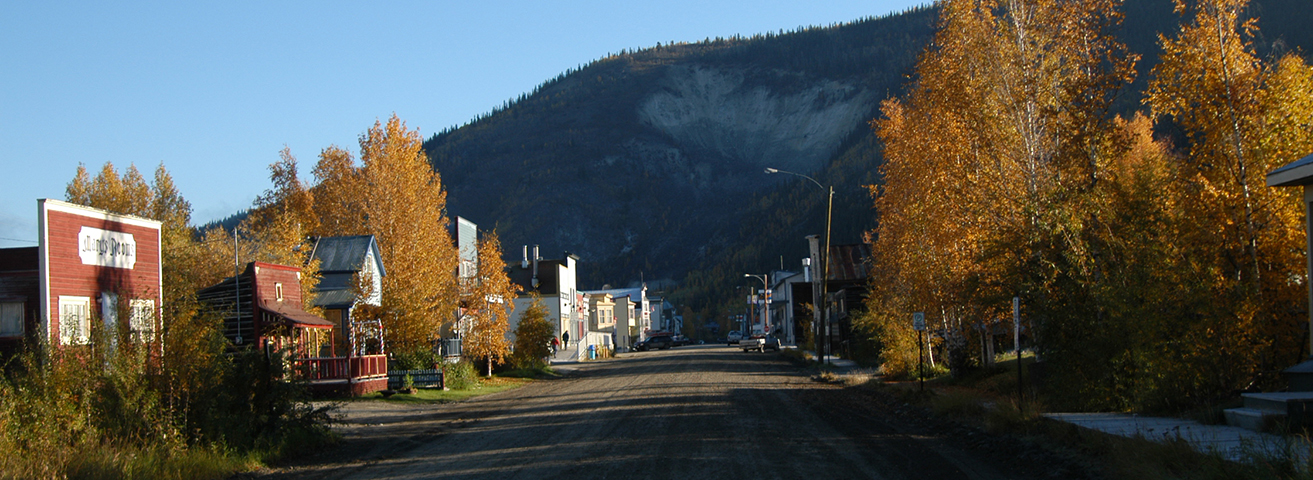Dawson City
The Dawson City component is located on the east bank of the Yukon River and across the Klondike River from Tr’ochëk.

Dawson City has both archaeological and built heritage features. One of the most iconic features is Ë`dhä` Dä`dhë`cha, (Moosehide Slide), a natural landslide stretching across the mountain face at the north end of Dawson City. Approximately 300 metres across and 100 metres high, the gravel-grey scar has been a landmark since ancient times.
Tr’ondëk Hwëch’in ancestors named this feature Ë`dhä` Dä`dhë`cha, because it resembles a large moose skin stretched out to dry. For Tr’ondëk Hwëch’in, the slide is an essential landmark, a cultural identifier, and a symbol of the land. For most Klondike Gold Rush stampeders boating down the Yukon River to Dawson City, the first sighting of the slide was a welcome sign that they had reached the Klondike region. The slide continues to serve as an important landmark for those arriving at Dawson City by land, water, or air. One of Tr’ondëk Hwëch’in most important songs, “The Flag Song,” is about the importance of landmarks like the Ë`dhä` Dä`dhë`cha, as indicators of belonging, occupation, and sovereignty.
By late 1898, some 30,000 migrants had reached the Dawson area during the Klondike Gold Rush. Over the next three years, construction of the town occurred at a rapid pace, beginning with tiny cabins and tent frames on the hillsides and by 1902, included the imposing government buildings designed by future Dominion Architect Thomas W. Fuller.
There are archeological features, including pre-colonial, along with post-colonial foundation remains of the hillside dwellings built and occupied by the newcomers.
The optimism of the miners, merchants, and government in the future of the town was reflected in the size, quality, and permanence of many of the public buildings. There were four large churches, a hospital, a courthouse, a government administration building, banks, a post office, a telegraph office, theatres, and many stores, hotels, and services. Together they represented all the major forces of colonialism: government, religion, commerce, transport, industry, communications and entertainment and were a manifestation of the changes imposed on the Tr’ondëk Hwëch’in people.
Collectively, these buildings illustrate the expansion and consolidation of colonialism. Tr’ondëk Hwëch’in people were either excluded from or not interested in patronizing most of these places. The public buildings, wooden boardwalks, gravel streets and small residences continue to reflect the history and development of Dawson City and the impacts experienced by Tr’ondëk Hwëch’in that began in 1874. In addition to the colonial elements, features such as Ë`dhä` Dä`dhë`cha, (Moosehide Slide) and the Yukon River connect people to the earlier, deep-rooted history, culture, and ongoing presence of Tr’ondëk Hwëch’in.
Dawson City is the primary location for visitation within Tr’ondëk-Klondike and has all the necessary infrastructure and resources in place to provide an outstanding experience for visitors to the site. In addition to visiting Dänojà Zho Cultural Centre and other venues such as the Dawson City Museum, there are also several tours and activities offered by Parks Canada during the summer months. A free, self guided walking tour booklet is also available from the Yukon government.
